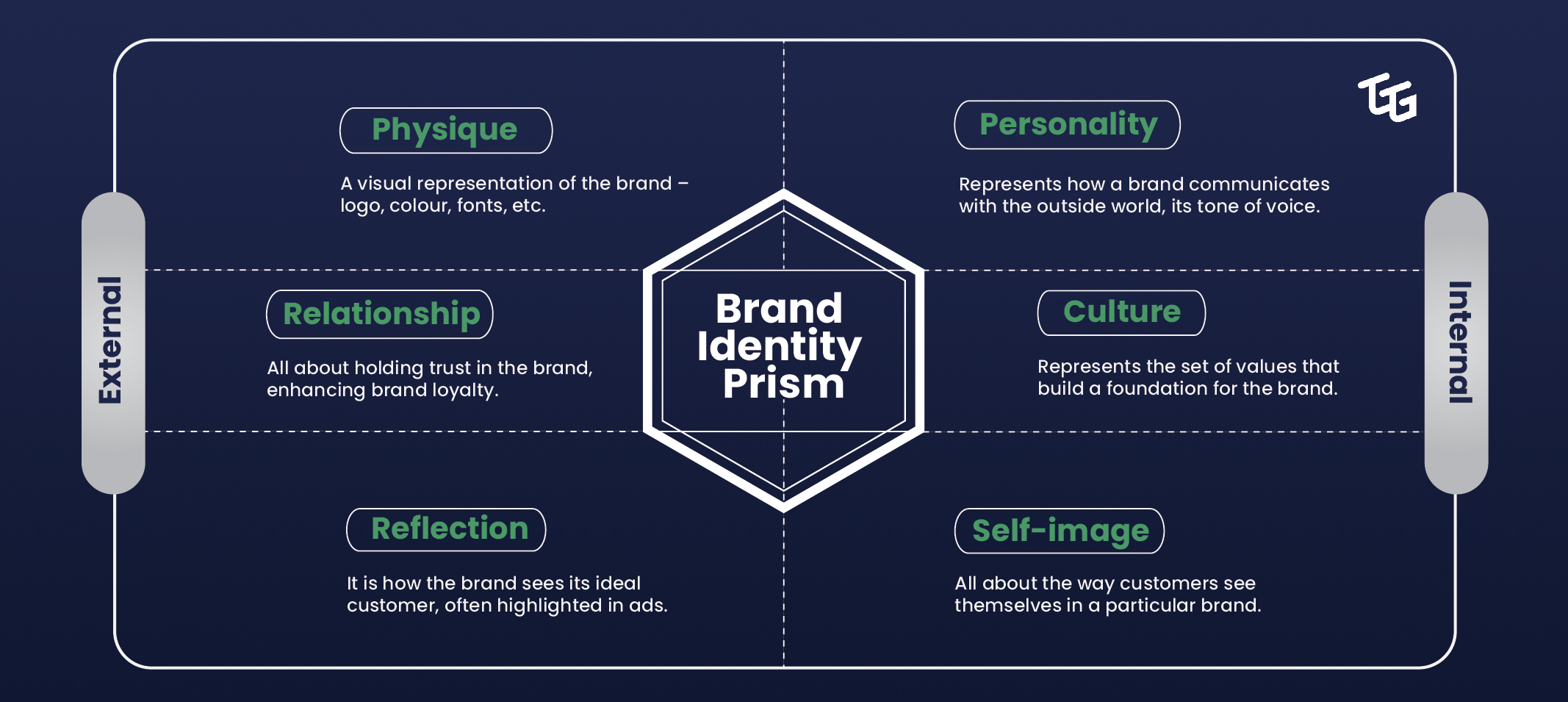Have you ever wondered how that sleek apple came to symbolize cutting-edge technology, or how a simple swoosh came to represent the epitome of athletic achievement? Join us on a journey through the evolution of iconic logos, where we uncover the hidden stories and surprising twists behind some of the world’s most recognizable brands. Get ready to peel back the layers of design, marketing, and ingenuity as we unveil the fascinating origins of these beloved symbols. So grab your magnifying glass and prepare to decode the mysteries of the logo universe – it’s going to be a wild ride!
Origins of Famous Logos
Ever wondered how some of the most iconic logos came to be? Let’s take a look at the fascinating origins behind some of the world’s most famous brands.
• **Nike Swoosh**: In 1971, Nike co-founder Phil Knight famously commissioned graphic design student Carolyn Davidson to create a logo for their new line of athletic shoes. The swoosh symbolizes movement and speed, which is fitting for a sports brand. Little did Davidson know that her simple design would become one of the most recognizable logos in the world.
• **Apple Bite**: The story behind Apple’s logo is quite intriguing. The original logo featured Sir Isaac Newton sitting under an apple tree, but Steve Jobs thought it was too complicated. He later approved the bitten apple design as a tribute to Alan Turing, the father of computer science who tragically committed suicide by eating a cyanide-laced apple.
Whether it’s the hidden meaning behind the logo or the quirky inspiration, the are always full of surprises. These brands have become household names, thanks in part to their clever and creative designs that have stood the test of time.

Evolution of Brand Identity
Brand identity has come a long way since the days of cavemen painting on walls. Nowadays, companies are hiring entire teams of experts to craft the perfect image for their brand. It’s like dressing your business up in a fancy suit and tie, complete with matching socks.
One of the biggest changes in brand identity over the years is the shift from traditional logos to more modern, minimalist designs. Gone are the days of intricate illustrations and complicated fonts – now it’s all about simplicity and sophistication. Think of it like swapping out your grandma’s old, dusty curtains for some sleek, black-out shades.
With the rise of social media, brands have had to adapt their identities to fit into the digital landscape. This means more emojis, hashtags, and viral campaigns than ever before. It’s like teaching your brand how to dance the latest TikTok trend – you’ve got to stay relevant, or risk being left behind.
Overall, the has been a wild ride. From ancient cave drawings to sleek Instagram grids, it’s clear that brands are constantly changing and adapting to the world around them. So next time you see a logo that looks like it just stepped out of a high-fashion magazine, remember – it’s all part of the .

Transformations in Logo Design
Logo design has come a long way since the days of clip art and Comic Sans. In today’s digital age, logos are sleeker, more versatile, and pack a punch like never before. Here are some transformations that have revolutionized the world of logo design:
- Minimalism: Gone are the days of cluttered logos with too many strange shapes and colors. Now, less is more, and a simple, clean logo can speak volumes.
- Adaptability: Logos are now designed to look good on everything from a billboard to a business card. They need to be versatile enough to fit any medium.
- Storytelling: A logo should tell a story about a brand, its values, and its mission. People want to connect with a logo on a deeper level, and storytelling is the key to achieving that.
So, whether you’re a startup looking to make a splash or an established brand looking to refresh your look, embracing these is the way to go. Remember, a logo isn’t just a symbol – it’s the face of your brand, so make it count!

Iconic Logos Through the Decades
1950s: The Golden Age of Advertising
During the 1950s, iconic logos were born out of the booming post-war economy and the rise of consumer culture. Brands started using bold colors, sleek typography, and catchy slogans to grab consumers’ attention. Some of the most memorable logos from this era include:
- Coca-Cola: The classic red and white logo that has stood the test of time.
- McDonald’s: The golden arches that have become a symbol of fast food and capitalism.
- IBM: The sleek, monochromatic logo that exudes professionalism and innovation.
1960s: The Age of Rebellion
In the 1960s, logos took a more psychedelic turn as the counterculture movement swept the nation. Brands experimented with bold colors, funky fonts, and groovy designs to appeal to the younger generation. Some of the most iconic logos from this era include:
- Apple: The bitten apple logo that has become synonymous with innovation and creativity.
- Nike: The swoosh logo that represents speed, movement, and empowerment.
- Volkswagen: The minimalist VW logo that captures the simplicity and functionality of the brand.
1970s: The Disco Era
In the 1970s, logos got groovier and more flamboyant as the disco era took hold. Brands used flashy colors, bold patterns, and exaggerated typography to stand out in a crowded marketplace. Some of the most iconic logos from this era include:
- Adidas: The iconic three stripes logo that has become a symbol of sport and style.
- Starbucks: The iconic siren logo that has come to represent coffee culture and community.
- FedEx: The hidden arrow in the logo that symbolizes speed, precision, and forward movement.
Adapting to Modern Trends
In today’s fast-paced world, it’s important to stay on top of the latest trends to remain relevant and cool. Whether it’s TikTok dances, avocado toast, or dad bods, is essential for survival.
To keep up with the ever-changing landscape of what’s hot and what’s not, consider the following tips:
- Embrace the power of social media: Get on Instagram, TikTok, and Twitter to show off your trendy side. Post selfies, food pics, and #OOTDs to let the world know you’re not living in the dark ages.
- Upgrade your wardrobe: Say goodbye to your cargo shorts and Crocs and hello to skinny jeans and Yeezys. Keeping up with the latest fashion trends will make your young and hip peers think you’re a fashion icon.
Don’t be afraid to break out of your comfort zone and try something new. Remember, fortune favors the bold (and trendy)!
Impact of Logos on Consumer Perception
Logos, logos, logos – they are everywhere! But have you ever stopped to think about how these logos impact your perception as a consumer? Let’s dive into the fascinating world of consumer psychology and branding!
First and foremost, logos play a crucial role in creating brand recognition. Just think about some of the most iconic logos out there – the golden arches of McDonald’s, the swoosh of Nike, the bitten apple of Apple. These logos are instantly recognizable and evoke strong emotions and associations. As consumers, we are constantly bombarded with logos, and whether we realize it or not, they shape our perception of a brand.
Moreover, logos can influence our trust in a brand. A well-designed and professional-looking logo can instill a sense of credibility and reliability in consumers. On the other hand, a poorly designed or generic logo may raise red flags and make consumers question the quality of the brand.
Additionally, logos can convey a brand’s personality and values. Whether it’s a fun and playful logo like the one for M&M’s or a sleek and sophisticated logo like the one for Chanel, logos can communicate a brand’s identity in a visual and memorable way. Consumers are more likely to connect with brands that have logos that resonate with them on a personal level.
FAQs
Why do iconic logos evolve over time?
Because just like us, logos need a makeover once in a while to stay fresh and relevant in the fast-paced world of branding. Plus, who doesn’t love a good glow-up?
What factors typically drive the evolution of a logo?
Well, it could be a change in company identity, a desire to modernize or simply a need to keep up with the ever-changing trends. Let’s face it, even logos want to be trendy.
Can you give an example of a famous logo that has undergone significant evolution?
Of course! Just take a look at the Starbucks logo. From a simple mermaid to a more stylized, modern version, she’s had quite the transformation over the years. Talk about a caffeine-induced glow-up!
Do customers usually respond positively to logo changes?
It really depends on the logo and how loyal the customers are. Some might embrace the change with open arms, while others may need some time to mourn the old logo. Change can be hard, you know?
What advice do you have for companies looking to update their iconic logos?
Don’t be afraid to take risks! Embrace the change and trust in the process. Your logo might just thank you for it with a swanky new look that will turn heads and make your competitors green with envy.
That’s a Wrap!
And there you have it folks! The evolution of iconic logos is truly a fascinating journey. From humble beginnings to global recognition, these logos have come a long way. Who knew that a simple design could hold so much history and significance? Next time you see a well-known logo, take a moment to appreciate the years of evolution and innovation that went into creating it. And who knows, maybe one day your own brand will become iconic too! So keep dreaming big, stay creative, and who knows? Maybe one day your logo will be the next big thing!











